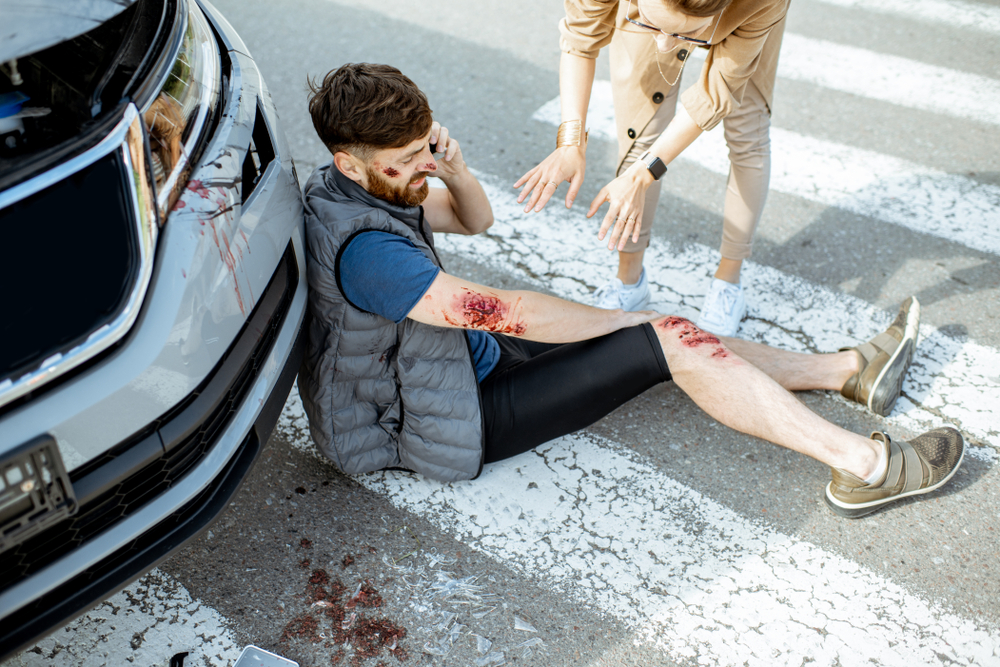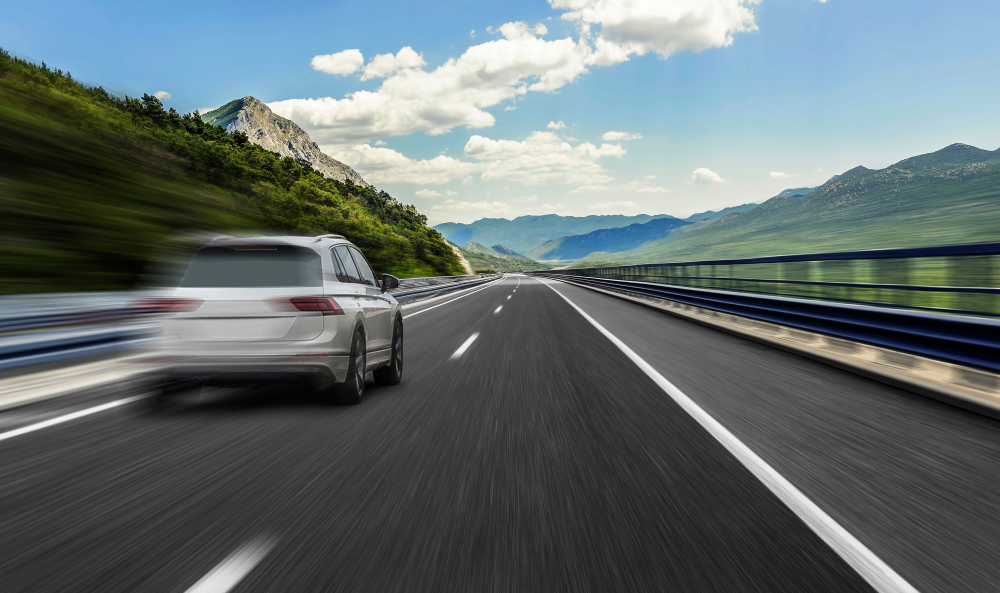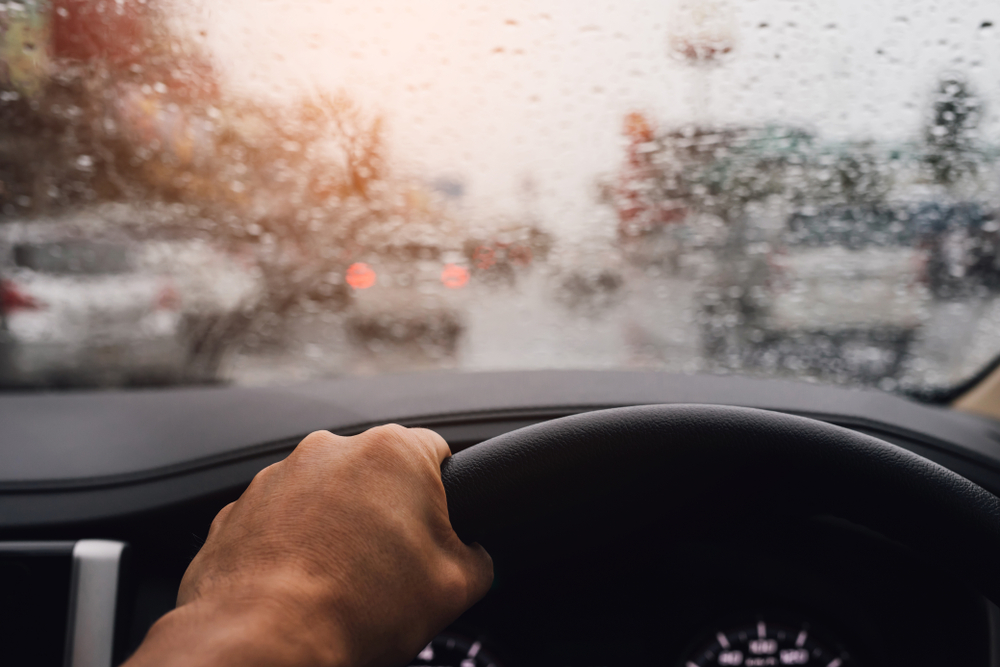Pedestrian accidents are a serious concern in many urban and suburban areas. They often result in severe injuries, given the vulnerability of pedestrians compared to motorists in their reinforced vehicles. Understanding the common causes of these accidents is the first step toward prevention and safety.
If you suffered injuries while walking, consult a Vero Beach pedestrian accident attorney immediately.
Schedule A Consultation Today!
Distracted Driving
In recent years, the emergence of new technologies and the presence of smartphones have revolutionized our lifestyles. While these advancements have brought about unprecedented convenience and connectivity, they've also introduced a significant danger to our roads: distracted driving.

Driving is a task that requires constant attention, with situations on the road changing rapidly. We can categorize distracted driving into three main types.
First, there's visual distraction, that involves taking your eyes off the road. Whether glancing at a text, checking a navigation map, or even looking at something on the roadside, any event that diverts your gaze is a visual distraction.
Next is manual distraction, that refers to taking one's hands off the wheel. Changing a song on the radio, eating, or typing a message involves manual interaction, leaving the vehicle momentarily out of control.
Lastly, cognitive distraction can happen even if your eyes are on the road and your hands are on the wheel. Engaging in deep thought, being engrossed in a conversation, or daydreaming can reduce awareness of the surroundings.
By their very nature, smartphones are a mix of all three types of distractions.
Reading a message diverts the eyes, typing a reply involves hands, and composing a text or processing received information takes the mind away from driving. In the few seconds it takes to read or send a text, a vehicle can travel the length of a football field when driving at highway speeds.
In such a span, a pedestrian can step onto the road, a vehicle ahead can brake suddenly, or unpredictable events can occur.
Modern vehicles often come equipped with advanced infotainment systems to provide drivers with connectivity and entertainment. While they are marketed as tools to enhance the driving experience, they, too, can become sources of distraction.
Adjusting settings, browsing playlists, or inputting destinations into navigation systems can consume attention, leading drivers to miss on-road events.
With a momentary lapse in attention, a motorist can fail to notice a pedestrian entering a crosswalk or a changing traffic signal with deadly consequences. Such oversights can lead to severe accidents, causing injuries or even wrongful deaths.
Failing to Yield the Right-of-Way
Yielding the right-of-way at crosswalks is a fundamental aspect of traffic regulations nationwide. The simple rule protects pedestrians, the most vulnerable road users. Vehicles must slow down when a pedestrian steps onto a crosswalk, allowing the individual to cross safely.
Yet, despite this law, accidents happen when drivers fail to yield. Many factors contribute to these accidents. In bustling urban environments where everyone is in a hurry, drivers may be reluctant to pause, even momentarily, for pedestrians.
This impatience can sometimes escalate into aggressive driving behaviors, where drivers might even speed up when a pedestrian begins to cross, forcing the pedestrian to retreat or hurry.
Distraction is another factor. With the stimuli in modern vehicles, from smartphones to infotainment systems, drivers can easily become momentarily distracted. Even a few seconds of diverted attention can be the difference between seeing a pedestrian stepping onto a crosswalk and missing them entirely until it's too late.
Ignorance or misunderstanding of the law can also play a role. Not all drivers are fully informed about the rules regarding crosswalks, especially if they're driving in a new city.
Some might mistakenly believe they have the right-of-way, while others might be unaware of the specific requirements when approaching crosswalks, such as the distance to stop.
Regardless of the reasons, failing to yield can be devastating. Collisions often result in severe injuries or fatalities for the pedestrian. These accidents change lives and can have lasting psychological impacts on all involved parties.
Speeding

When a driver decides to speed, they're not just breaking the law; they're fundamentally altering the dynamics of their vehicle and the environment around them. Speeding reduces the margin of error available for the driver and everyone else on the road.
Speeding's most immediate effect is on the driver's reaction time. A scenario that unfolds on the road—like a child chasing a ball into the street or a car ahead suddenly braking—requires fast and precise reactions.
However, the faster a vehicle travels, the quicker the driver responds. What might have been a harmless event at a lower speed can turn catastrophic when speeding due to the limited window of reaction.
Then there's the issue of stopping distances. The faster a car is moving, the longer it takes to come to a complete stop. This isn't just about braking distance, that increases with speed, but also the distance traveled during the driver's reaction time. Especially in densely populated areas, every extra foot it takes to stop can be the difference between a near-miss and a tragic accident.
School zones and residential neighborhoods are particularly vulnerable to the dangers of speeding. These areas are bustling with pedestrians, including children, who might not always act in predictable ways.
Speeding in these zones magnifies the risk exponentially. A vehicle moving at high speeds cannot stop in time if a child suddenly steps onto the road. Also, these areas often have parked cars, trees, or other obstructions that can limit a driver's visibility, making speeding even more dangerous.
The severity of collisions is also directly related to speed. The laws of physics dictate that the faster a vehicle moves, the more kinetic energy it possesses. In the event of a collision, this energy translates to force.
At higher speeds, the force of impact is significantly magnified, often resulting in catastrophic damage to both vehicles and, more tragically, to human lives. Even the most advanced safety mechanisms in a car, like airbags or crumple zones, have their limits and may not offer adequate protection during high-speed collisions.
Impaired Driving
Impaired driving remains one of the most significant and concerning threats to road safety. The term impaired usually conjures images of drivers under the influence of alcohol, but it's broader than that. Impairment can stem from prescription medications, over-the-counter drugs, and illegal substances. Each can affect a driver's ability to operate a vehicle safely.
Alcohol is a common culprit, and its effects on driving are well-documented. Even small amounts can affect a person's judgment and slow reaction times.
As the level of alcohol in a person's system increases, so do the risks. Coordination becomes poorer, making it harder to drive the vehicle. Judgment becomes clouded, leading to riskier behaviors on the road. Significantly slowed reaction times can have devastating consequences in situations requiring quick responses, such as a pedestrian suddenly stepping onto the road.
However, the dangers don't stop at alcohol. Even when taken as directed, prescription medications can cause drowsiness, dizziness, or other side effects that impair driving ability.
Read medication labels carefully and consult healthcare providers about potential effects on driving. Over-the-counter drugs, often perceived as harmless, can also have side effects that affect driving performance. For instance, antihistamines, common in allergy medications, can cause drowsiness.
When these substances influence drivers, their perception of the environment can become skewed. They might not notice stop signs, traffic lights, or pedestrians.
Even if they do notice, their impaired state might lead them to misjudge distances or speeds. An intoxicated driver might think they have plenty of time to pass before a pedestrian, only to find they've misjudged the situation.
It's also worth noting that combinations of substances can lead to compounded effects. Alcohol and marijuana, when used together, can impair driving more than alone. Similarly, mixing prescription medications with alcohol or other drugs can lead to unpredictable and often increased impairments.
Weather Conditions

Adverse weather conditions often introduce many challenges for drivers, altering the road dynamics and requiring increased caution. Each type of weather phenomenon brings unique hazards that can affect driving conditions and the safety of both motorists and pedestrians.
Fog, for instance, blankets the road in a dense mist, severely reducing visibility. Due to this, drivers might struggle to see what lies a few meters ahead, let alone spot a pedestrian crossing the road.
The limited visibility requires drivers to reduce their speeds significantly and rely more on their hearing. Still, even these precautions might not be enough if a pedestrian suddenly appears from the dense curtain of fog.
Rain, on the other hand, affects the road in multiple ways. The immediate aftermath of a rain shower can make roads slick with water, especially if there's an accumulation of oil and rubber deposits. This combination can make the road surface slippery as ice, making it difficult for drivers to maintain control of their vehicle, especially during sudden turns or brakes.
The reflection of headlights on wet roads can also create a glare, further reducing visibility. For pedestrians, rain can mask the noise of approaching vehicles, and umbrellas might obstruct their peripheral vision, increasing the chances of an unforeseen accident.
Snow and ice present another set of challenges. Snow can cover road markings, making it hard for drivers to see lanes, crosswalks, or the road's edge. Ice, especially black ice, nearly invisible to drivers, can make roads treacherously slippery.
Braking on an icy road can lead to skidding, and even vehicles equipped with anti-lock brakes might struggle to come to a complete stop in time to avoid a collision. Pedestrians, too, are at risk of slipping on icy patches, potentially falling into the path of oncoming traffic.
Poorly Designed Crossings
Crosswalks and intersections that aren't well-designed can pose significant risks. Factors like inadequate crossing time at signalized intersections, lack of visibility due to parked cars or vegetation, or even poorly lit areas can endanger pedestrians.
Left-hand Turns
Accidents often happen when vehicles make left-hand turns. Drivers typically watch out for oncoming traffic and may not always check for pedestrians crossing concurrently.
Backing-Up Accidents
In parking lots or driveways, drivers might inadvertently turn into pedestrians, especially if they're not using rearview cameras or if the pedestrian is in a blind spot.
Vehicle Design
Larger vehicles, like SUVs and trucks, might have bigger blind spots, making it harder for drivers to spot pedestrians, especially children, directly in front of or behind them.
Ignoring Traffic Signals
Pedestrians rely on traffic signals to know when it's safe to cross. When drivers run red lights or don't stop at stop signs, they can surprise pedestrians already in the crosswalk.
A Pedestrian Accident Lawyer Can Help
Pedestrian accidents are tragically common and can upend lives. A pedestrian accident attorney is a vital advocate for those who have suffered injuries in accidents involving vehicles. Their expertise in personal injury law is tailored specifically to pedestrian-related incidents. These attorneys navigate the complexities of such cases, providing invaluable assistance in several ways.

First, they conduct thorough investigations, gathering evidence and eyewitness testimonies to establish liability. This includes examining accident reports, obtaining surveillance footage, and consulting accident reconstruction experts if necessary.
Additionally, a pedestrian accident attorney helps quantify damages. They assess medical bills, future treatment costs, lost wages, and any other relevant expenses, ensuring a comprehensive claim for compensation.
Negotiating with insurance companies is another critical role they undertake. They handle communications, protecting the injured party's rights and pursuing fair settlement every step of the way.
If negotiations fail to yield a satisfactory outcome, the attorney is ready to take the case to court. They provide expert representation, presenting the case effectively to secure just compensation.
Furthermore, a pedestrian accident attorney provides invaluable emotional support during a challenging time. They guide clients through the legal process, offering clarity and reassurance.
In essence, a pedestrian accident attorney provides valuable services, fighting for the rights and interests of those who have suffered harm in accidents involving vehicles. Their expertise and commitment are essential in obtaining rightful compensation and justice.
